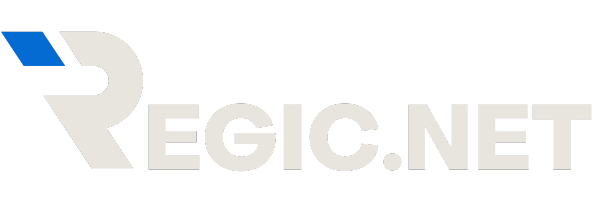In the complex world of finance and real estate, a mortgage stands as a fundamental pillar, enabling millions to achieve the dream of homeownership. But precisely what is a mortgage? And what are the types of mortgage loans available to borrowers today? This article aims to demystify these concepts, providing you with a comprehensive understanding of mortgages and their various forms.
What is a Mortgage?
A mortgage, simply put, is a type of loan specifically designed for purchasing real estate. It is a legal agreement between a lender and a borrower that allows the borrower to use property as collateral to borrow money. The borrower agrees to pay back the loan, plus interest, over a specified period. If the borrower fails to make payments, the lender has the right to reclaim the property through foreclosure.
Mortgage loans are typically long-term loans, with repayment periods spanning anywhere from 10 to 30 years. The appeal of a mortgage lies in its ability to allow individuals to buy property without requiring the entire purchase amount upfront. Instead, buyers can secure a property by putting down a fraction of the price as a down payment, financing the rest through the mortgage.
Understanding the intricacies of a mortgage is crucial, as it represents one of the most significant financial commitments most people will ever make. Now, let’s delve into the various types of mortgage loans available in today’s market.
Types of Mortgage Loans
The landscape of mortgage loans is diverse, offering flexibility to meet borrowers’ unique needs and financial situations. Here are some of the most common types of mortgage loans available:
1. Fixed-Rate Mortgages
A fixed-rate mortgage is often considered the quintessential mortgage type. As the name suggests, the interest rate on these loans remains constant throughout the life of the loan. This stability allows borrowers to know exactly what their monthly payments will be, making budgeting much more manageable. Fixed-rate mortgages are usually available in terms such as 15, 20, or 30 years, with the 30-year fixed mortgage being the most popular choice among homebuyers.
2. Adjustable-Rate Mortgages (ARMs)
In contrast to fixed-rate mortgages, adjustable-rate mortgages (ARMs) feature interest rates that can change periodically. Typically, an ARM will start with a lower interest rate than a fixed-rate mortgage, making it attractive for some borrowers. However, after an initial fixed period—commonly 5, 7, or 10 years—the interest rate adjusts annually based on prevailing market conditions. This means monthly payments can fluctuate, posing a risk if interest rates rise significantly.
3. FHA Loans
Backed by the Federal Housing Administration, FHA loans are designed to help those with lower credit scores and smaller down payments achieve homeownership. These loans require a down payment as low as 3.5% and are relatively easier to qualify for compared to conventional mortgages. However, borrowers must pay mortgage insurance premiums, which protect the lender in case of default.
4. VA Loans
VA loans, guaranteed by the U.S. Department of Veterans Affairs, are available to current and former members of the military and their families. These loans require no down payment and do not mandate private mortgage insurance, making them a highly attractive option for eligible borrowers. VA loans also tend to have more favorable terms and interest rates.
5. USDA Loans
The United States Department of Agriculture offers USDA loans to assist low-to-moderate-income families in purchasing homes in designated rural areas. These loans require no down payment and provide competitive interest rates. However, eligibility is restricted to properties within specific rural and suburban regions, and borrowers must meet certain income requirements.
6. Jumbo Loans
A jumbo loan is necessary when the property’s price exceeds the conforming loan limits set by the Federal Housing Finance Agency (FHFA). These loans are particularly common in high-cost areas. Because they pose a greater risk to lenders, jumbo loans typically have stricter credit and income requirements and may demand higher down payments.
7. Interest-Only Mortgages
Interest-only mortgages allow borrowers to pay only the interest for a set period, generally ranging from five to ten years. After the interest-only period ends, borrowers must begin paying both principal and interest, leading to higher monthly payments. This mortgage type can appeal to those expecting a significant increase in income or who plan to sell or refinance before the principal payments begin.
8. Balloon Mortgages
A balloon mortgage offers lower initial payments, as borrowers pay interest for a short period, usually five to seven years. At the end of this term, the borrower must make a large “balloon” payment covering the remaining loan balance. This type of mortgage can be risky, as it relies heavily on the borrower’s ability to make the final payment or refinance the loan.
Choosing the Right Mortgage
Selecting the right mortgage type is critical and should hinge on your financial situation, future plans, and risk tolerance. A fixed-rate mortgage might be ideal for those seeking predictable payments, while an ARM could benefit those planning to move or refinance before the initial fixed period ends. Government-backed loans like FHA, VA, and USDA offer accessibility to specific groups, each with its advantages and trade-offs.
Prospective borrowers should also consider the total cost of a mortgage, including interest rates, closing costs, and any associated insurance premiums. Consulting with a financial advisor or mortgage broker can provide valuable insights tailored to your specific circumstances.
Conclusion
In conclusion, understanding what is a mortgage and familiarizing yourself with the various types of mortgage loans available equips you with the knowledge to make informed, confident decisions in your real estate journey. Homeownership, while a significant financial commitment, can be a rewarding venture when approached with prudent planning and awareness.



